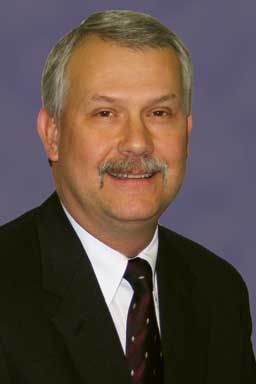From the Executive Director: Skills (Sept 2008)
I recently had the opportunity to attend the SkillsUSA®national competition in Kansas City, Missouri. The self-description for this organization is “SkillsUSA® is a partnership of students, teachers and industry working together to ensure America has a skilled work force. We help each student excel.” More than 5000 high school and college students competed in 91 occupational and leadership areas. Any given year, more than 300,000 students and instructors join SkillsUSA® and work towards the national competition.
The emphasis of SkillsUSA® is on total quality of work, high ethical standards, superior work skills, life-long education, and pride in the dignity of work. The students benefit from enhanced self-confidence, work attitudes, and communication skills. While at this competition, I was continually impressed by the dedication, focus, and efforts of these young people. I was also impressed by the commitment of the supporters of SkillsUSA®. More than 1100 businesses, industries, and labor organizations contribute funds and personnel to the organization and the competition. A large number of these supporters were present as exhibitors at the national competition.
On my drive back home, I could not help but think about how, in comparison, the veterinary profession is developing food-animal veterinarians, specifically swine veterinarians. Are we doing enough to bring young veterinarians into swine medicine and production? Are we teaching them the skills needed for today’s industry? Are we equipping them with the skills to recognize opportunities in the industry and the ability to take advantage of those opportunities? These are questions that the colleges of veterinary medicine need to be taking into consideration, as well as the AASV. These are questions for pork producers and allied industry to mull over.
The numbers of swine-oriented veterinary faculty are decreasing. It is not rare to see a college of veterinary medicine leave swine positions unfilled when faculty leave. The AASV experiences this with the shrinking number of faculty advisors who are AASV members. The impact is felt by veterinary students with an interest in swine, but no one on faculty to fan the flame. Dr Locke Karriker puts it very succinctly when he says “students want mentors, not programs!” Without swine faculty members, students will have no one to encourage and guide them on a meaningful pathway into the profession.
I don’t think it is likely that the colleges that have abandoned swine positions are going to fill them at any time in the future. That then leaves a gap to be filled by others with a stake in the profession and the industry. Naturally, the AASV and the AASV Foundation are vitally interested in the future of swine veterinarians. While AASV members can fill the roles of mentors, that will not happen without continued development of an interface where students can connect with swine veterinarians. We have several initiatives designed to promote swine medicine to veterinary students. Recently, we have also begun efforts towards attracting high school students through the FFA National Convention. Next spring, the AASV will be an exhibitor at the national meeting of the American Pre-Veterinary Medical Association.
The efforts of the AASV and the AASV Foundation in attracting veterinary students to swine medicine have paid off with an increased level of interest by students, especially at the annual meeting. Students have responded with gratitude for the opportunity to be a part of the meeting, not merely passive observers. The quality of presentations during the student seminar is evidence of the students’ commitment and efforts. Alpharma and Elanco are long-term sponsors of the financial scholarships awarded through the seminar competition. The student workshop is a great starting point for students to learn about the skills needed for success in the profession and the industry. The student reception is a great place for students to meet and talk with seasoned practitioners and leaders in the industry. Intervet has been a sponsor of the reception for several years.
Other opportunities are expanding and developing. The AASV Summer Conference in May was opened up to students at a reduced fee ($50). The AASV Foundation has increased the stipend for externship support. Each student can apply for up to $500 to cover the expenses incurred during an externship with an AASV member. The foundation has also increased the monetary grant for students to attend the annual meeting to $200. Newport Laboratories has been a partner in supporting the incentive for student attendance. All of these efforts can enable and empower students to improve their skills in preparation for a career in swine medicine and production.
The commitment of the AASV and AASV Foundation are also paying a dividend of a different sort. The National Pork Industry Foundation (NPIF) took notice of the efforts to attract students to swine medicine and to help develop their skills. The NPIF recently made the decision to financially support these efforts through the AASV Foundation. The NPIF has committed $20,000 per year for 3 years to a new program of expanded summer externships for first- and second-year veterinary students. The AASV Student Recruitment Committee has designed this new program, which will be in place for the summer of 2009. However, recruitment for the program will begin in the fall of 2008.
After experiencing SkillsUSA®, I can’t help but think we can still do a better job in developing skills in veterinary students and young veterinarians. The AASV’s biggest strength is not in the quantity, but in the quality of our members. If we are to maintain this quality, then we need to be always improving our efforts to increase the knowledge of swine veterinarians of all ages and levels of experience. We improve through the ideas and input from AASV members. Got skills? Then share them!
–Tom Burkgren, DVM
